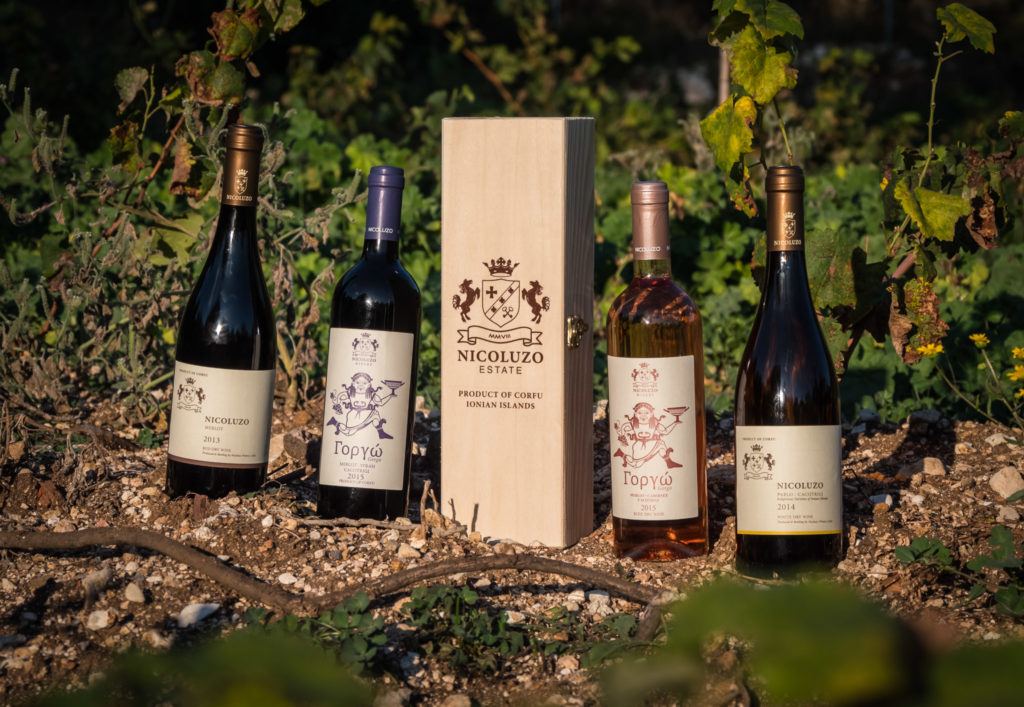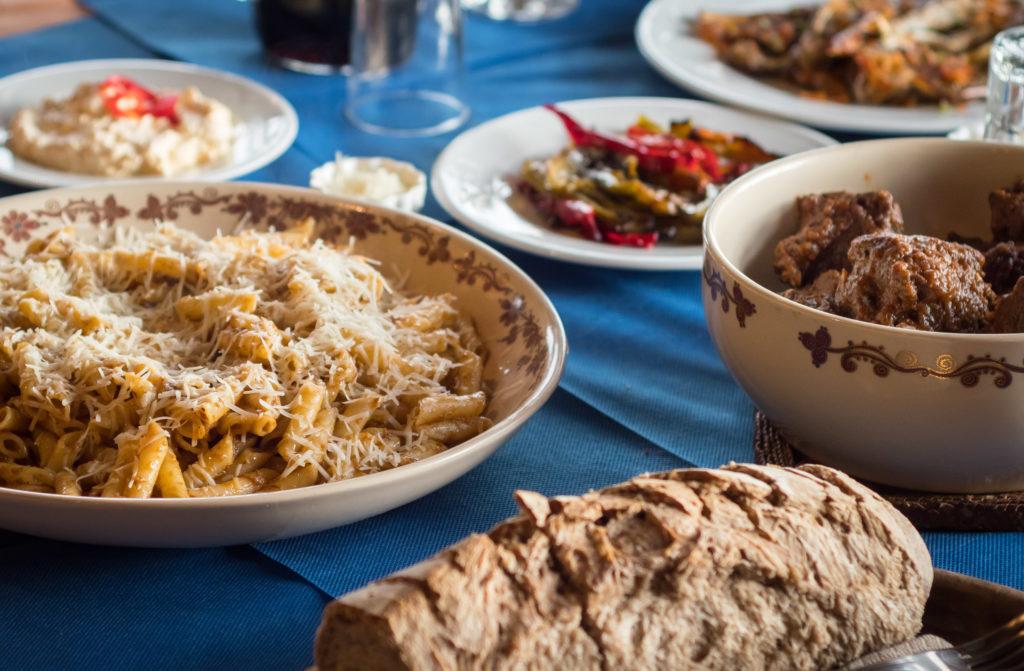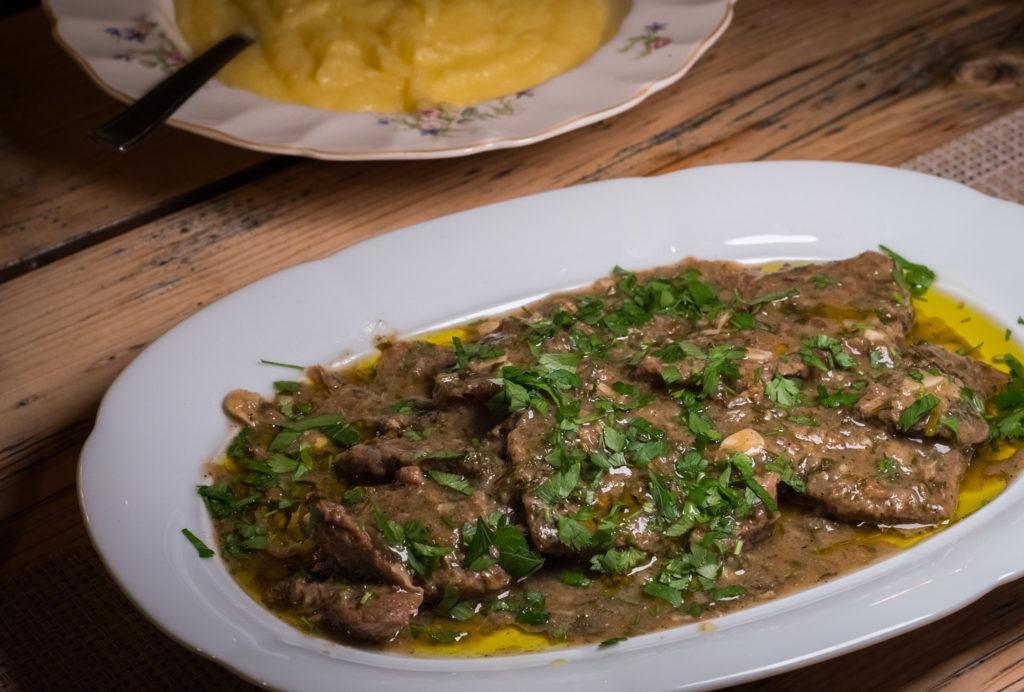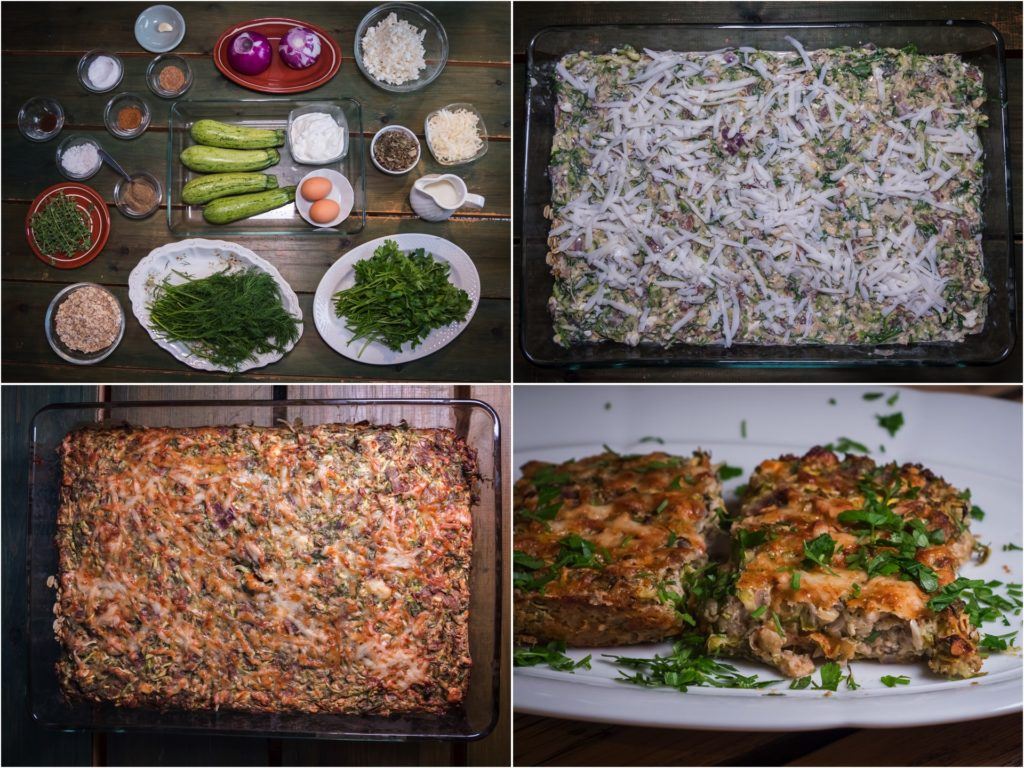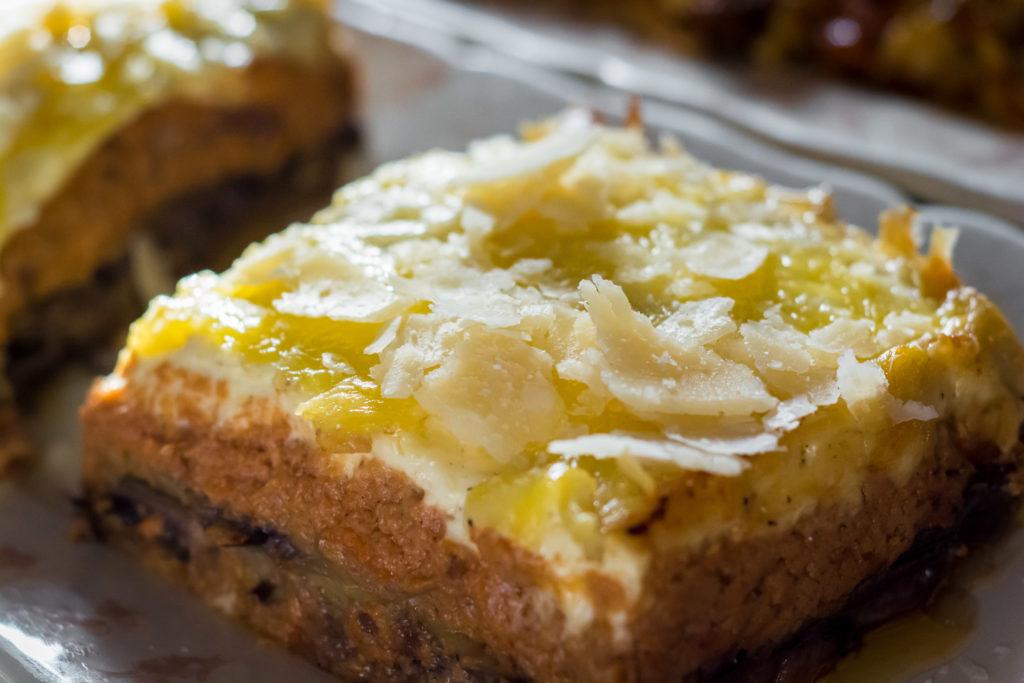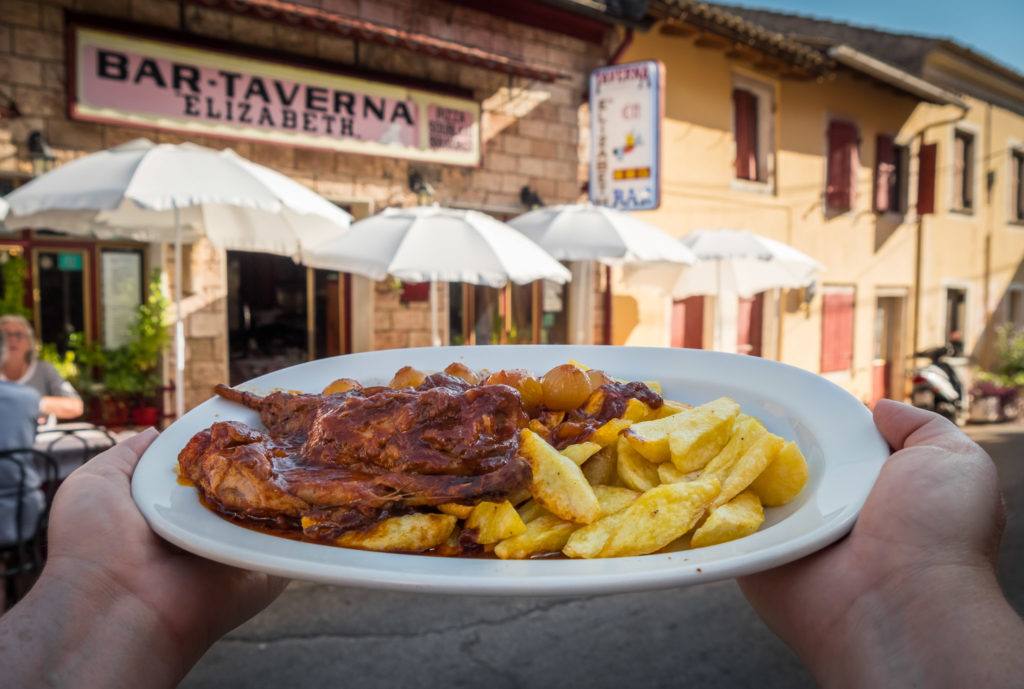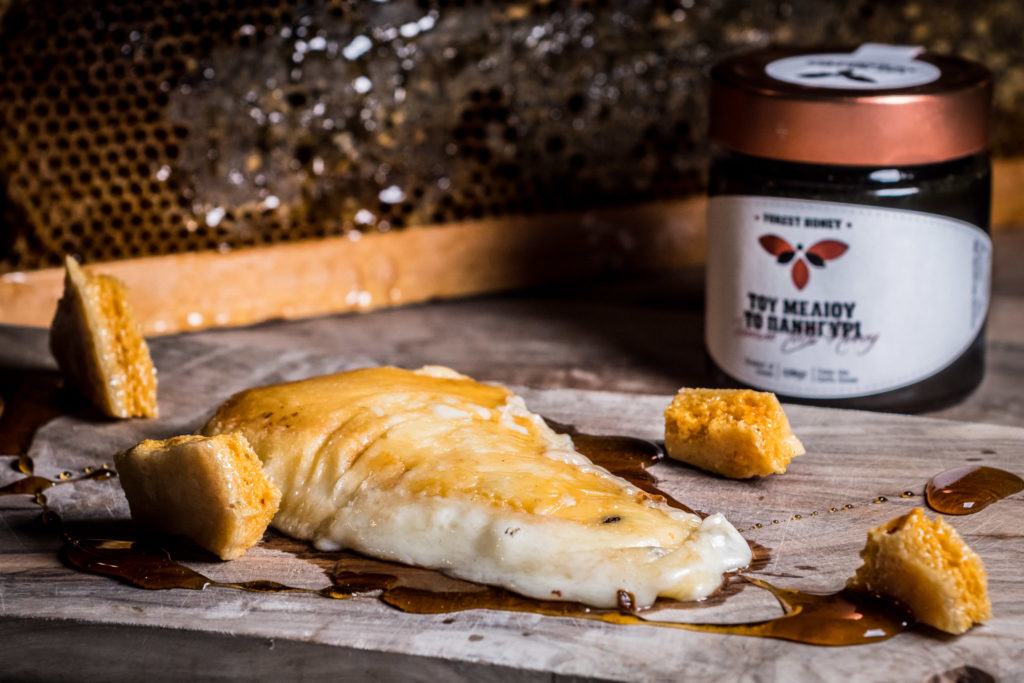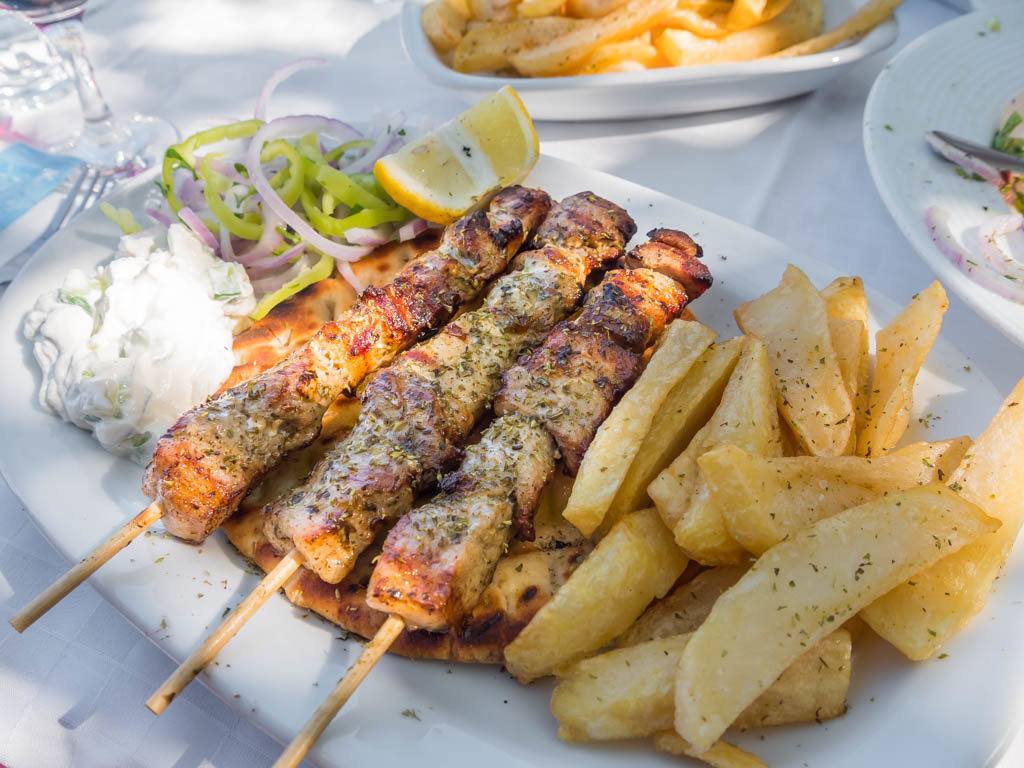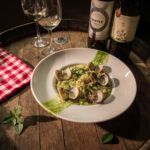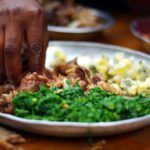Traditional Corfu Food is an international fusion. Though Greek and Venetian are the strongest influences, spices from the east, cooking methods from France as well as other parts of the Mediterranean and even the remnants of British occupation, have all left their mark on Corfu food.
Corfiot cuisine is dominated by the use of wine, garlic and eastern spices, like cloves, allspice, cinnamon and more.
As well as some traditional Corfu food you will find plenty of traditional Greek dishes on the island.
So, in this guide, you’ll learn the stories behind what to eat in Corfu as we explore 18 amazing Corfu dishes.
Traditional Corfu Food: Table Of ContentsA Brief History Of Corfu Island & Corfu Food Our Corfu Food & Fun Interactive Map Corfu Food Podcast (Listen Today) Essential Ingredients in Traditional Corfu Food Traditional Corfu Food: Historic Dishes Of Corfu Traditional Greek Dishes / Typical Greek Food: Dishes From Around Greece That You Can Try On Corfu What To Do In Corfu: 32 Food & Fun Experiences (Opens in new tab) Accommodation In Corfu: Booking.com | Agoda | Expedia | Hotels.com (Opens in new tab)Disclaimer: This article may contain affiliate links which generate a commission for us if you purchase something through a provider we recommend. Please use our links, rather than searching google, in order to help support our blog so we can keep providing you free content. |
A Brief History Of Corfu Island & Corfu Food
Corfu may be a Greek island but they have their own turbulent culinary history that has led to many dishes which are uniquely Corfiot. To understand why Corfu food differs from other parts of Greece, you need to know a little about the history of the island.
The Island of Corfu has a long history and is mentioned frequently in Greek Mythology. The name Corfu might be derived from the word koryphi, meaning “peak” and could go back to the 7th century when the Byzantine empire built a castle on a summit near Corfu Town. But, to the Greeks, the island is known as Kerkyra, named after a nymph who was the daughter of the river god Apsopos.
The island has archeological evidence of inhabitation as far back as 40,000 BC. More modern evidence of human settlement from the Mesolithic and Neolithic periods (before 2,600 BC) have been found in the north of the island near Sidári.
Corfu’s location in the Ionian sea (North West Greece) has led to it being invaded and occupied many times over the years. From the Roman & Byzantine empires to coming under Venetian rule in 1386 until being ceded to the French in 1797. This long connection with Venice left its legacy on the cuisine of the island, which strongly integrates Italian cooking methods and foods.
Just shortly after French rule began though, the island became British following the Napoleonic wars of the early 19th Century. Eventually, in 1864, Corfu was returned to Greece. During World War 2 the islands were occupied by Italy and then Germany until eventually being liberated by allied forces.
After the second world war, the old traditions started to be lost as the human story of Corfu changed. Tourism became the major industry of Corfu. Locals left agricultural jobs to work in the tourist sector. Simultaneously, restaurants, both old and new, adapted their menus to serve an international palate. Subsequently, many of the traditional recipes of the islands disappeared from menus, and eventually, from home cooking too.
Local restaurateur and cookbook author Vasiliki Karounou from Ambelonas Vineyard, restaurant and cooking class, is trying to re-discover and re-popularize the historic traditions of Corfu food.
Vasiliki published a book about Corfiot cuisine, in it, she describes the 3 biggest influences on Corfu over time, not as cultures, but as ages represented by 3 specific individuals.
The most ancient age, Homer, who represents the traditions of wine, olive and olive oil, honey, bread, herbs, figs, pears and pomegranate.
Wine, Olive oil and bread being of such importance that they became holy symbols, each represented by a different Greek god – Dimitra for bread, Athina for Olive Oil and everyone’s favourite God, Dionysus the god of wine.
After the Gods, the age of Marco Polo, who opened the spice box to the people of Corfu, as Venetian trade brought spices from the East like black pepper, cinnamon, cloves, cumin, nutmeg and ginger.
And finally, the age of Columbus, who expanded the cuisine with tomatoes, potatoes, corn, zucchini, bell peppers and more.
The cuisine is Mediterranean at its heart, but distinctly Corfiot in its soul. It’s Mediterranean food made Corfu style, but still evolving to this day.
You can go and try one of the most extensive seasonal menus focusing on traditional dishes at Vasalkis’ restaurant called Ambelonas, just 15 minutes drive from Corfu Town. There you’ll be greeted with Panoramic views as well as the opportunity to dine in a traditional farmhouse, or take a cooking class.
Corfu Greece Map – Free Interactive Tourist Map
We’ve put together a google map overlay with all our top picks of attractions, restaurants, foodie experiences, accommodation, transport locations and more! Save yourself a bunch of time by having our huge list of Corfu highlights instantly at your fingertips. Get Our Corfu Greece Map NOW – Click Here.
- Works on any device over 4G or wifi – follow the map as you travel
- It’s FREE!
- 40+ highlighted spots to visit
- Super easy to use on google maps
Corfu Food Podcast – Listen Now
In this episode:
- Famous Corfiot dishes & Ingredients. We discuss the stories of the most important local foods.
- Venetian-Greek fusion cuisine. How Venetian rule and the spice trade created a unique Greek island cuisine not present in other parts of the country.
- The lost art of Corfiot cooking. How the tourist boom destroyed local culinary tradition and how one woman has been trying to revive Corfu’s most historic dishes.
- PLUS: Corfu Food Made With Wine! Will we actually find any traditional Corfiot food that is not cooked with booze in it? Tune in to find out.

Listen & Subscribe: iTunes | Spotify | Google Play | Stitcher
RSS:https://feeds.captivate.fm/thedish/
Support: Become a Patron | Tweet: @foodfuntravel | Email: [email protected]
Essential Ingredients in Traditional Corfu Food
Corfu is a verdant green garden compared so some other, drier, islands in Greece. And this certainly has led to good growing land. And, of course, as an island, they are surrounded by great seafood.
Basic seasonal ingredients include everything from zucchini to mussels. Figs to Sea bream (Lavraki). All of the fresh ingredients you’d expect in the Mediterranean kitchen.
But there are a few particular ingredients that are worth a special mention.
Wine
Wine is used throughout European and world cuisine but I don’t think I’ve ever visited a place where wine features so centrally in every traditional main course. Traditional Corfu food is centred around the use of wine. The island actually has a few grapes that are endemic – we talk more about Corfu wine in our what to do in Corfu article.
Eastern Spices
By the 16th Century, Corfu had become one of the most important ports along the Venetian-Mediterranean trading route. With stops in other important ports like Rhodes, Paphos in Cyprus, Koroni and Methoni in the Peloponnese – Corfu had one of the best city fortifications in the region, so strong that the Ottoman empire tried but failed multiple times to take Corfu, while successfully taking other cities in the Balkan region.
As such, spices from the east flowed through Corfu, which was a safe harbour for vessels to stop for repairs and to re-stock supplies. This led to spices from the East being off-loaded to the locals and becoming an important part of the cuisine due to their relative abundance compared to other parts of northern Greece.
Cinnamon, allspice, nutmeg, cloves, black pepper, amongst others, have featured in Corfiot cuisine for hundreds of years, and continue to be a part of the culinary tradition today in both savory and sweet dishes.
Nouboulo (or Noumboulo) – Pork Loin cold cut
Cured pork loin is a popular meat product in many parts of Europe. It most likely became a tradition of the island due to Venetian rule. Nouboulo, also known as Corfiot prosciutto, is made by the traditional method: Pork loin is smothered with coarse salt. Black pepper and oregano are also added. The meat is stuffed inside a pig intestine and smoked over a fire made with pennyroyal, sage, oregano branches, myrtle, laurel and lentisk branches. Then it’s left to age in a dry environment.
Corfiot Sweet Mustard
A condiment influenced by both British and Venetian Rule. The mustard is both sweet and spicy, sweetness from fruits and spice from mustard seed and peppercorns. Some recipes add cloves and nutmeg and sweet wine. The mustard can accompany meats, or be used in salad dressing.
Kumquats & Kumquat Spirits
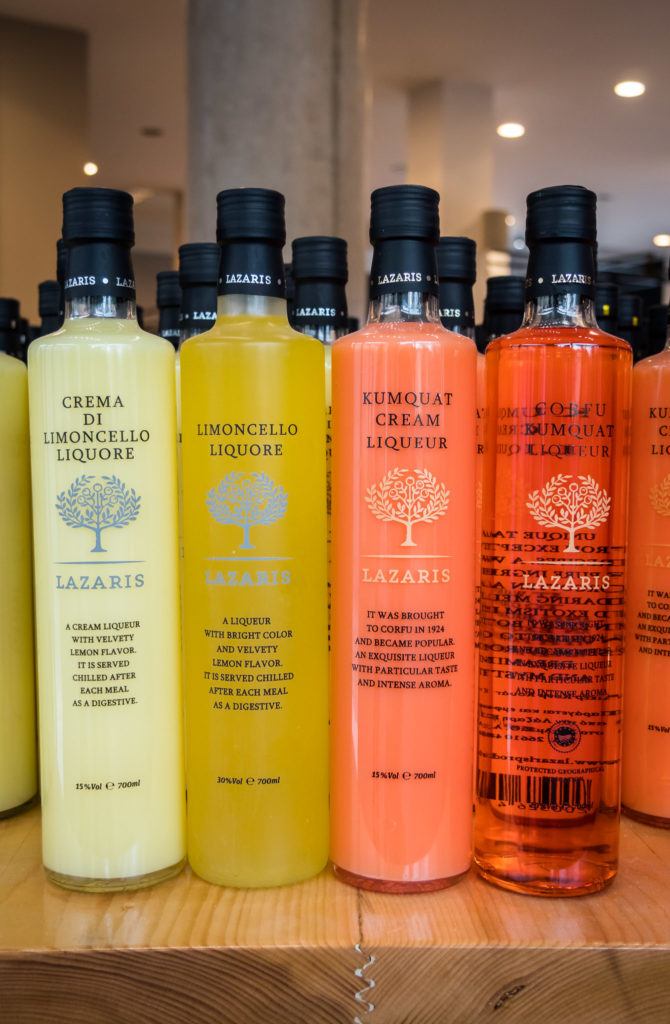
What To Eat In Corfu: Kumquat Spirits & Limoncello @ Lazaris Distillery
Kumquats don’t originate on Corfu but have become an integral part of the island’s produce since the early 20th century.
- Kumquat is a citrus tree, with origins in China, Japan and other south Asian countries. The earliest historical reference in literature dates back to the 12th century
- In Chinese cuisine, kumquats are often smashed with honey, ginger, or even salt and made into a herbal tea to heal colds and flu.
- The English name “kumquat” derives from the Cantonese gām-gwāt 金橘, literally meaning “golden orange” or “golden tangerine”.
- Kumquat production in Corfu reaches 100 tons per year.
- First brought to Europe in 1846 by Robert Fortune but didn’t arrive in Corfu until much later.
- Today the Corfu kumquat has a PDO – protected designation of origin – and is mainly cultivated in northern Corfu.
- The kumquat is usually not eaten raw as it’s flavour is bitter-sour and not really juicy in any way, but is used for producing fine liqueurs (made from the skin of the fruit), jams and sweets.
- Most of the crop is used as liquor but the fruit is also used in cooking for example baked cookies, it’s also used to make syrups (ideal on greek yoghurt) sauces and glazes for meats, salad dressings and desserts. they even boil and roast the fruit. It’s also used in cosmetics, toiletries and perfumes.
I looked at a lot of articles that claim to tell the tale of the arrival of kumquats on Corfu. Many of them mention botanist Sidney Merlin. Most of the stories say he introduced kumquats to the family’s estate in northern Corfu in 1860, which would have been quite a feat as Merlin would have been only four years old at that time. Wikipedia says he was born in 1856. That’s one clever toddler!
One source even gives the date of introduction as 1846, ten years before Merlin’s birth, which was actually the year that plant hunter Robert Fortune brought them from China to Europe. As best as I can tell, and from what the people on the island actually told us – Merlin’s kumquat’s arrived in 1924, a few years after he had successfully introduced Washington navel oranges to his estate on the island.
Traditional Corfu Food: Historic Dishes Of Corfu
The below dishes have historically been a part of Corfiot cuisine. Some are harder than others to find today.
What To Eat In Corfu: Pastitsado or Pazztisada
Pastitsado (Sometimes spelled Pazztisada) is a hearty red wine stew with rooster or beef that is served with pasta.
The exact origin of this dish is unclear as red wine stews may have been made for as long as red wine was available on Corfu – thousands of years. And the rooster arrived in East Europe around 3,000 BC. The spice trade came later, as did Venetian rule and lots of pasta. So it’s possible the dish began evolving to its current form some time from the 15th century. With the addition of tomato paste and paprika coming much later, after tomatoes and bell peppers had made it to Europe from the Americas.
In it’s most basic, and likely original form, it is a simple stew of rooster in red wine, flavored with whatever herbs were fresh on the farm that day, served with pasta on the side (though it may have come with bread originally). It’s a real agricultural dish of the poor.
Traditionally, they used old wine that was turning, to add a sour flavor to the pastitsado, rather than throwing out the old wine. Then they used slow cooked onions to balance the sourness with sweet – way better than using sugar, which only became available after the discovery of the New World.
The spiced version developed after Venetians became the rulers of Corfu, bringing the spice trade. Residents of the island with more money could afford to make the dish with these exotic spices, and often used beef instead of rooster too.
The specific spice blend used in Pastitsado is called “spetsieriko”, and every recipe for this blend is a little different. But the general ingredients include:
- Cinnamon
- Organic Paprika Powder
- allspice
- nutmeg
- cloves
- Black pepper
- Sometimes cumin and maybe chili pepper too.
The word “spetsieriko” actually derives from the word “Spetsieri”, which means pharmacist as these spice blends were once made to order. As we mentioned earlier, the spice trade was an essential part of Corfu life and those spices were not just used for flavor but considered important for health, and so blends were prepared by pharmacists with medicinal intentions too. This is why the pharmacists at the time played such an important role in the spice trade on Corfu.
Karmelas Pharmacy in Corfu Town was founded in 1850 and is widely considered to produce one of the best spetsierikos on the island – combining at least 15 ingredients into their top secret recipe. You can still visit and get a packet of spetsieriko for yourself.
Also, although some tomato paste is used in the Pastitsado, a lot of the deep, powerful red color comes from the paprika.
The original poor version of the dish may have just used whatever local herbs were in season but today you’ll mostly only find the spiced version available in restaurants. A red wine stew with herbs may not be a unique dish in world cuisine, but the spiced version is something very special indeed that you must try in Corfu!
You’ll find pastitsada on almost every traditional taverna menu as it is one of the most popular Corfiot dishes for locals and tourists alike.
Looking For Accommodation In Corfu? Browse options For all of Corfu*:
Booking.com | Agoda | Expedia | Hotels.com
*Please Support our blog by using our links. Thanks!
What To Eat In Corfu: Sofrito
Sofrito is one of the most popular dishes in Corfu that is easy to find and the name refers to both the dish and the cooking style – to “slowly fry”. The dish originates from the Venetian influence but the Corfiot version is uniquely different…
A classic Sofrito in Italy may slowly fry onions, carrots and celery. In Cuba, you are more likely to find onions and bell peppers.
But in Corfiot Sofrito the main ingredients to be slowly fried are the beef and a lot of Garlic. I mean, seriously, a lot of garlic. In the realms of 2 cloves per small portion of beef. This makes for a meaty but pungent dish.
Corfu has its own variety of garlic called “kakavilia” – it has small bulbs with a fine reddish-purple skin. That said, the garlic we used to cook Sofrito at our Ambelonas cooking class (pictured) was regular, large garlic. So if you are using the Corfu variety, you’d need more than 2 cloves per person!
Also in this Sofrito: White wine, parsley, olive oil and salt and pepper are pretty much the only other ingredients.
What To Eat In Corfu: Fish Bianco
After the Pastissada and the Sofrito, the dish that everyone raved about most in Corfu was Fish Bianco. It’s essentially fish simmered with white wine on a bed of potatoes. The potatoes are pan fried first with lots of garlic and olive oil, then white wine is added, along with salt and cloves, and then potatoes are left to simmer and soften.
Next, a fish like Seabass – Greek Seabass is called “lavraki” – is placed on top of the potatoes, with the liquid partially covering the fish. The dish continues to cook on a low heat until the fish gets soft. Then lemon juice, zest, chopped parsley and black pepper are added along with some flour, in order to thicken the sauce.
After it thickens, it’s time to eat this zesty seafood favourite!
Simmering or baking seafood or meat on top of potatoes is certainly a standard choice along the Dalmatian coast and down to Corfu. But as always, everyone has their own method.
On September 14th each year, the island of Corfu recognizes the religious festival of the Exaltation of the cross. For this, Salt Cod is used as the fish for Fish Bianco.
Veal Fricando
Veal Fricando is a loin of veal, larded and braised, or roasted.
It is possible that the word “fricandó” originally comes from ancient Occitania (now the southern third of France, as well as part of Catalonia – Aran Valley – Monaco, and some parts of Italy (Occitan Valleys, Guardia Piemontese). Many of these regions today still claim Fricando as their own traditional dish even though the modern borders are very different from Medieval times.
The recipe for fricandó, as we know it now, appears for the first time in writing in a Catalan recipe from the beginning of the 18th century: “Notices and instructions for the beginner chef ” by father Josep Orri.
So, what is the connection to Corfiot cuisine? Parts of Occitania did reach as far as Italy and this could have been brought into Venetian cuisine and thus introduced into Corfiot cuisine. But there is little Information available to prove this was an Italian/Venetian dish. It is possible the dish was introduced by the French during their brief rule from 1797. Fricando is still going strong in Catalan and French cooking. There’s even a similar dish in Switzerland known as Fricandeaux
Zorka (Veg pies )
One of the simplest farmer foods on Corfu are pies made with seasonal vegetables – with or without a pastry shell. Depending on the season you may find Zucchini pies, savoury pumpkin pies, onion pies, cheese pies, or whatever is fresh on the farm that day.
There are a lot of different pies in Greek cuisine, and eating at a regular taverna on Corfu you might more likely be served a pie that is more reflective of other parts Greece. Such as Spanakopita – spinach pie, or Tyropita, cheese pie, normally made with phyllo dough.
Though the lines are blurred between dishes these days. A homemade Corfiot pie focuses more on the filling than the pastry. So a pastry heavy pie with a thin strip of cheese inside, like Tyropita, is not really the Corfiot style.
We made zucchini pie at Bioporos Organic farm, quite far south on Corfu Island. They are certified 100% organic, and the farm sits on the banks of Lake Korission, where you’ll see Flamingos at the right time of year. We visited to take a cooking class and for a family style meal of local dishes.
Homegrown ingredients are brought to the kitchen daily. Every vegetable is grated up and everything is thrown in together.
Herbs are very important and in one pie they might put a whole cup of fresh and dried herbs. It was a surprise just how many herbs are used, but of course, this was traditionally what was grown by people living on a farm, that would provide more flavor.
Historically, if you had money, you might have some spices like cloves added, that would bring a whole extra dimension to a pie. Of course, cheese mixed in is a common ingredient too. And eggs, to bind it all together when baked in the oven.
One important consideration when making a pie with a watery vegetable like zucchini is to stop the pie getting soggy. The solution in Corfu, they add a handful of rice, or rolled oats, which soak up the liquid.
Bioporos farm is a tranquil, family farm where they are seeking to educate visitors about leading an organic way of life, as well as sharing their home cooking recipes!
Harder to find Traditional Corfu Food:
Fish Bourdeto
This dish is typically made with Skate, but any fish or seafood can be used. The dish originates from areas throughout Venetian controlled Adriatic ports. As always, everyone has their own variation.
The dish is a fish soup that was invented by fisherman as a way to use up fish that they were unable to sell. Slightly older fish, therefore, is re-invigorated – ie. made less old and fishy – by the use of spices.
Namely, a mix of both sweet and hot paprikas. Also, the sweet and sour style is also brought in with the addition of lemon juice, vinegar and a lot of sautéed onions. Once again, white wine and olive oil are essential!
Pork Dolcegarbo
Pork Dolcegarbo is Pork slowly cooked with onions, rosemary white wine and spices (served with aromatic rice, polenta or potatoes )
Beef liver alla Veneziana
This dish uses olive oil, of course, but also butter. It’s a fried liver dish in the Venetian style that has been given the Corfu treatment. But it’s rarely seen on tourist menus (Though you can sometimes find it at Ambelonas). The other main ingredient is, of course, wine! Red wine, and it’s also spiced with hot red pepper.
You might be noticing a trend if it wasn’t clear already… Sweet and sour flavours, with eastern spices and wine and olive oil. That’s Corfiot main courses in a nutshell.
One interesting side fact about this dish is regarding the Greek word for liver – “Sikoti”. It’s derived from the word for Fig “Siko” because in ancient times figs were fed to animals like geese and pigs to give better flavor to the liver.
Sikomaida – Corfiot Dessert
Speaking of figs… Sikomaida is found in some of the more traditional villages, this is a sweet fig pie made with Figs pounded in Ouzo, walnuts, spices and pepper then wrapped in fig leaves.
Traditional Greek Dishes / Typical Greek Food: Dishes From Around Greece That You Can Try On Corfu
They may not have originated on Corfu, but these traditional Greek dishes are available across the island and the rest of Greece. Take advantage of your time in Corfu to sample some typical Greek food, cooked by the locals who know the dishes intimately. There are so many Greek dishes, so this is just a few typical ones we love that are not to be missed.
Moussaka
This world famous baked dish consists of layers of eggplant (aubergine), potato, minced lamb (sometimes beef) layered with bechamel sauce and spiced with nutmeg. The origins of this dish are contentious. It’s common around the whole Balkan region. Some say the name is rooted in the Turkish language, and the Ottomans occupied much of the Balkan region in the past, so they claim to have invented the dish. Bulgaria also has a version which focuses more on potatoes than eggplants. But Moussaka has been popularised worldwide within Greek cuisine.
We’ll be doing a full podcast episode on the history of Moussaka in the future. For now, the origins remain a mystery.
But, we love the Greek version of the dish and you’ll find it on menus of traditional tavernas across Corfu.
Mussels Saganaki
The word “saganaki” refers to a heavy metal frying pan used in Greek cooking. So Mussels Saganaki is a pan fried mussels. The twist is, it’s fried in a tomato based sauce with feta cheese. Making it a quintessentially Greek way to cook mussels.
Amazing at Bellissimo restaurant, Corfu Town. See Bellissimo Reviews On TripAdvisor
Rabbit Stifado
Stifado is a casserole dish which includes meat (usually rabbit), caramelized onions, tomatoes, wine and spices – usually cinnamon and cloves, perhaps allspice.
The word stifado comes from “stufado,” a dish brought to Greece by the Venetians after the fall of Constantinople and before the Ottoman invasion. However, the dish didn’t contain tomatoes at that time, this was introduced in the 16th century after the Spanish brought tomatoes back from the Americas.
Stifado is a Greek stew that is made in many regions – Corfu and Crete being two major locations that this dish is most popular. But where in Greece was it cooked first? It’s unclear. But with the wine and spices, it bears some resemblance to the Pastitsada, but is not normally served with pasta.
The rabbit stifado at Taverna Elizabeth, opened in 1960, is delicious. Places To Eat In Corfu: Check Out Taverna Elizabeth on Facebook
Cheese Saganaki
The Saganaki frying pan returns, this time to fry up a salty and wonderful piece of cheese – this is one of the best Greek starters. No batter or anything is added. It’s just the cheese, the frying and served with a piece of lemon. This is normally a savory dish and can be found on restaurant menus everywhere. But, on Corfu, you can also try the dessert version served with dark honey and faux honeycomb at Pomo D’oro restaurant. Salty and sweet. Perfect. (Seasonal availability at Pomo D’oro)
Our Pick Of Top Restaurants In Corfu Town: Book a table or get more info for Pomo D’oro.
Souvlaki & Gyros
A quick mention, in case you didn’t know already. Souvlaki is Greece’s own shish kebab. Meaty pieces cooked on a skewer.
Gyros is similar to a döner kebab – but better, in my opinion. Pork or chicken cooked on a vertical rotisserie and served in a warm, thick pita bread with salad and sauce.
Looking For Accommodation In Corfu? Browse options For all of Corfu*:
Booking.com | Agoda | Expedia | Hotels.com
*Please Support our blog by using our links. Thanks!
Don’t Forget! Get Our Corfu Greece Map – Free Interactive Tourist Map
We’ve put together a google map overlay with all our top picks of attractions, restaurants, foodie experiences, accommodation, transport locations and more! Save yourself a bunch of time by having our huge list of Corfu highlights instantly at your fingertips. Get Our Corfu Greece Map NOW – Click Here.
- Works on any device over 4G or wifi – follow the map as you travel
- It’s FREE!
- 40+ highlighted spots to visit
- Super easy to use on google maps
—-
What’s your favourite Greek dish? Leave us a comment below!
Love this post? Why not Pin it?
 |
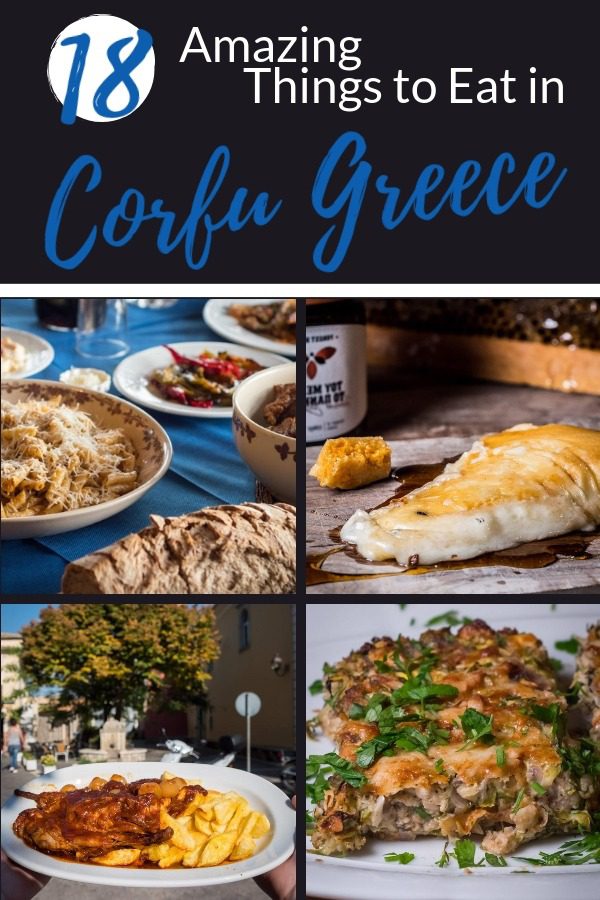 |
 |



